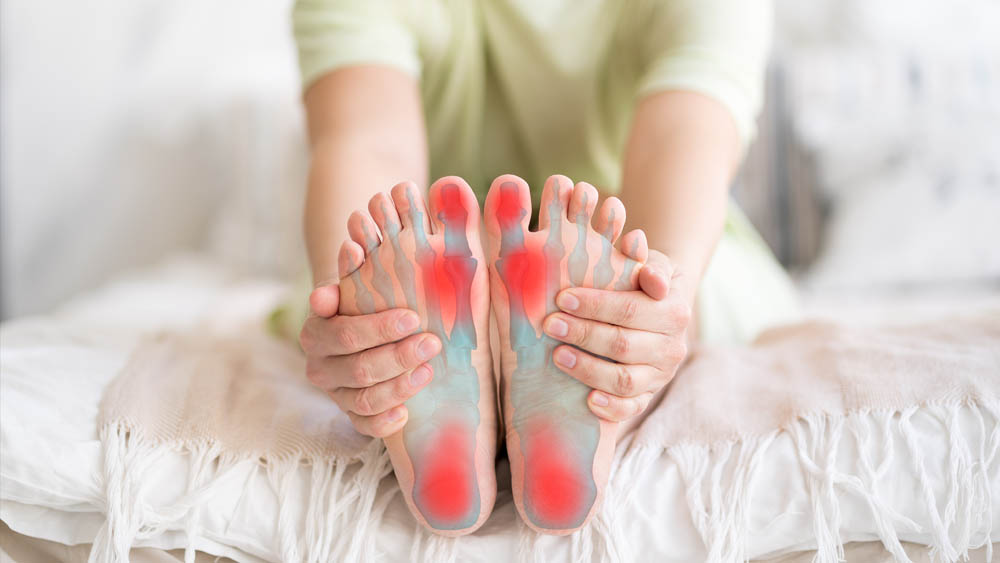What is Valgus? Getting a Leg Up on the Common Condition Associated with Lipedema
GET DIAGNOSED
Share on facebook
Facebook
Share on twitter
Twitter
Share on linkedin
LinkedIn
Find out how to restore alignment, reverse deformity, and alleviate the pain of “knock knees” syndrome.
Commonly referred to as “knock knees,” valgus is a lower leg deformity that exists when the bone at the knee joint is angled outward, prohibiting the person from touching their ankles while their knees are touching. When the legs are not correctly aligned, additional stress and pressure is placed on the susceptible knee joint, resulting in pain, discomfort, restrictive range of motion, and even mobility challenges.
Causes of Valgus
While Valgus can sometimes be prevented, there are other factors at play that can cause the orthopedic condition, such as:
- Genetic predisposition
- Underlying developmental disease
- Vitamin D and/or calcium deficiency (also known as rickets)
- Obesity/excessive weight gain that causes pressure on the knee joint
- Injury to or infection in knee joint or leg
- Arthritis
While a medical evaluation can be used to determine the presence of valgus in the knees, including, inequality in leg length, knee alignment angle, x-ray/MRI scan, and uneven wear on soles of shoes, valgus associated with lipedema patients is quite apparent, especially in the latter stages of the fat deposition disorder.
Symptoms of Valgus
The following symptoms are most associated with the knee deformity and will worsen if left untreated:
- Stiffness and soreness
- Pain
- Limp in gait
- Unsteadiness/loss of balance
- Subsequent pain in ankles, feet, hips, and back
- Degenerative joint disease of the knee
Treatment for Valgus
The following therapies are used to aid in the mitigation and advancement of valgus, such as:
- Anti-inflammatory drugs
- Physical therapy
- Compression garment therapy
- Knee replacement surgery in more severe, advanced cases
https://www.healthline.com/health/genu-valgum
The results of a study featured on lipedema.net revealed lymph sparing liposuction was shown to significantly improve knee and joint functionality and flexibility in lipedema patients. The case study involved a lipedema patient who had developed advanced degenerative joint disease of the knee with ostensible limited range of motion, pain, and mobility challenges. The removal of fat accumulated from posterior thigh, anterior thigh to the knee, and upper calf improved the patient’s knee mechanics and alleviated overall joint stress with activity, while also reducing pain during everyday activities. The liposuction therapy option enabled the patient to essentially postpone total knee replacement surgery, and if a knee replacement were to be needed in the future, the liposuction would have a positive impact on the success of the surgery. Remarkably, the patient’s valgus corrected over 5 degrees, allowing for pain-free descent of stairs! (SOURCE)
Conclusion
Proven, innovative treatments, such as lymph sparing liposuction and water-assisted liposuction (a highly specialized form of liposuction that decreases lymphatic congestion and tissue inflammation in the extremities, specifically targeting the vulnerable knee area, and is performed under total intravenous anesthesia – TIVA), can effectively correct the leg axis when fat build-up around the knees, thighs, and upper calves is removed. Addressing the core issue of valgus will help to eliminate years of unnecessary pain, debilitating deformity, mobility limitations, degenerative joint disease, and a possible future knee replacement surgery.
To learn more, please contact our Beverly Hills, California office to schedule a consultation with any of our highly trained specialists

